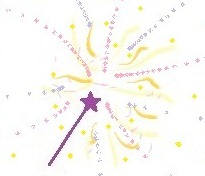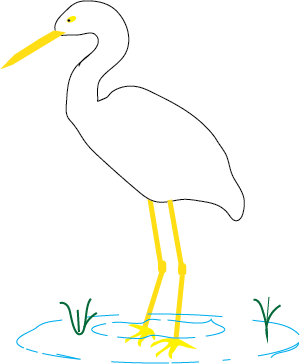
What is a Fairy Tale?
Best Definition of Fairy Tales

- Supernatural characters - These are not always fairies, in fact witches are far more common. These magical characters may be good or evil, and bring good luck or harm to the main character. They include witches, elves, trolls, dragons, and the ever popular fairy godmother.
- The contest between good and evil - This of course is present in almost all literature, but in fairy tales it takes a slightly different twist. The main character is generally trying to escape a wicked spell, win the hand of a beautiful princess which requires overcoming obstacles set by the witch or other supernatural character, or gain a fortune or other tantalizing treasure by performing a task.
- They are short stories that can be read in one sitting and commense with "Once upon a time" and usually conclude with "and they all lived happily ever after." A rather nice conclusion considering the horrific adventures they suffer in between.
Where Did Fairy Tales Come From?

They have a semi-midieval theme: hence the castles and princes. But they actually pre-date the Middle Ages. You will note:
- The absence of knights in armor
- The small-kingdoms (multiple princes vying for one princess)
- The small number of jobs (farmers, hunters, an occasional shoe-maker) in a feudal system
- Fear of witchcraft and the supernatural
Poor hungry peasants desired nothing greater than a prince to marry their daughter and improve their lot in life. (Today, many dream of winning the lottery to fulfill the same desire.)
Even the more "modern" fairy tales imitate the genre of this older, dark era.
Characters in Fairy Tales

Then I grew up and read them as an adult. Excuse me! My mother read this stuff to me when I was little!
Murderous step-mothers; children sent alone into dark, dangerous forests; canniablistic trolls - you keep waiting for someone to call the welfare worker to require parenting classes (at the very least.)
Of course a female welfare worker would have to be like all the other women in the fairy tales and limited to one of two types of females:
- a young beautiful woman
- an ugly old hag
What, with no dental care, vision-services to prevent squinting, sun-tan lotion, and a slew of beauty products taking up no less than one full aisle at the grocery store. Now serously, which category would you be in by age 30 in that situation?
But, even if you're elderly, you certainly don't have to be evil - which of course everyone knows all old hags are.
Of course, there are a few more types of males, but but bulk of them are:
- a prince - probably a handsome one at that
- a hunter
- a poor farmer
Before the witch gets them and puts a spell on them or feeds them to a dragon or hides them in a tower.
You get the idea.
Are Fairy Tales Good for Children

Having said that, I'll also state that as a kid I read the fairy tales and listened to them over and over on my record player. Yes, I know I'm dating myself. But I did, and can't say the evil and superstition did any long term damage.
Beneath the sinister and superstition of fairy tales, lies a story that is at the heart of living. The belief that evil is present but can be over-come. Greed is bad, selfishness is bad, the lust for power is bad; and love, honor, and courage are good.
Hidden behind the surface of dark motives and hards times, runs a silver thread that connects the modern child to their long-forgotten ancestors. Good things happen to good-hearted people, and happily-ever-after really can happen to me... someway... somehow.
Maybe reading a fairy tale is a good way to get that point across. Anyway, it sure beats kissing a frog.
Popular Fairy Tales
Charles Perault - 1696
French

- Tales of Mother Goose
- Sleepng Beauty
- Puss 'n Boots
- Tom Thumb
- Cinderella
- Little Red Riding Hood
- Beauty and the Beast
- Blue Beard (nope, not the pirate ghost)
- Sleeping Beauty
- Of course, many other lesser known tales
Grimm's Fairy Tales
German - 1812

- Cinderella
- Little Red Riding Hood (Little Red Cap)
- Rapunzel
- Briar Rose
- Hansel and Gretel
- The Elves and the Shoemaker
- Snow White
- Snow White and Rose Red (see discussion below)
- The Twelve Brothers
- Rumpelstiltskin
- Tom Thumb
- The Frog Prince
- The Seven Ravens
- Pied Piper of Hamlin
- Stone Soup
- And approximately 196 others
Peter Christen Asbjornsen and Jrgen Moe
Norweigian - 1832

East o' the Sun and West o' the Moon
This is the most popular of their stories as well as the book title for collections of their fairy tales. A poor farm girl becomes a wealthy princess and saves her family from poverty by leaving her home with a mysterious White Bear. He turns out to be a handsome prince under a spell. To break the spell, she needs to travel to a castle east of the sun and west of the moon. On her travels she meets three old hags who give her golden objects and the loan of their horses. She rides on the East Wind, the West Wind, the South Wind and the North Wind. When she arrives at the place, she needs to rescue her beloved from a long-nose princess whom he is to be forced to marry.
The Twelve Wild Ducks
Here is an ubiquitous tale which has a few points that might make the modern reader cringe. A queen with twelve sons allows a witch to cast a spell on them in order to obtain a much wanted daughter. She names her princess Snow White and Rosey Red. (Yep, that's the name of one person.) The princess finds out about her twelve brothers who have been turned into wild ducks. To break the spell she must weave thistles into twelve outfits. But before she completes her task a king captures her to marry her. But his step-mother has a horrific plot to kill Snow White and Rosey-Red. Found in the collection East o' the Sun.Okay, so why did I list these two particular tales? It is interesting to note that in the Grimm's Fairy Tales, the story of Snow White and Rose Red is very similar to the story of the East of the Sun. However, Asbjornsen and Moe have Snow White and Rose Red in the story of The Twelve Wild Ducks. Just for comparison, the twelve wild ducks are twelve ravens in the Grimm Brother's The Twelve Brothers. Hans Christian Anderson has the twelve brothers as swans in a similar-but-different version named Wild Swans.
The similarity between different fairy tales indicates that later writers were influenced by earlier fairy tale collections. The difference also demonstrates the wide sphere of the earlier oral traditions which spread as populations migrated, mixed, and gradually changed the details of the stories.
Princess on the Glass Hill
I have included this tale by Asbjornsen and Moe for a particular reason: it is the masculine opposite of Cinderella. The youngest son of a farmer, named Boots, acquires magnificent horses that are able to climb the glass hill to the princess. His brothers taunt Boots and say all he does is poke in the ashes or cinders. The king calls all men in his kingdom to find who has the golden apple given by the princess to the man whose horse climbed the glass hill. Then Boots is revealed in front of his scornful brothers. Other tales handed to us by Asbjornsen and Moe include:- Three Billy Goats Gruff
- Why the Sea is Salt
- Tatterhood
Hans Christian Anderson Fairy Tales
Denmark - 1835

While his stories are later and not as dark as those of Grimm and Perault, the influence of the Dark Ages and violence and cruelty is still discernable. Some of his most popular fairy tales include:
- Ugly Duckling
- 5 Peas for a Princess
- The Princess and the Pea
- The Emperor's clothes
- The Little Match Girl
- Snow Queen
- Little Mermaid
- Tin Soldier
- Thumbelina
- Wild Swans (see discussion above)
Joseph Jacobs
English - 1890

But the downside of the lateness of the recorded English fairy tales is that the ancient folklore of the British Isles had largely disappeared. Joseph Jacobs collected tales from oral traditions and earlier written versions. He published the volumes English Fairytales, Jewish Fairytales, and Indian Fairytales. Some of his best known stories are:
- Gingerbread Man
- Three Little Pigs
- Goldilocks and the Three Bears (earlier version credited to Southerly 1837)
- Jack and the Bean Stalk
- Tom Thumb (the first fairy tale written in English, but recycled numerous time from older versions)
- Henny Penny
American Fairy Tales?

However, L. Frank Baum has the distinct honor of being the first widely read author of American fairy tales when Kansas tornadoes, Dorothy and Toto met up with wizards and witches in the land of Oz. We have an elementary-age unit study on The Wizard of Oz for those who would like to dig deeper into the written version of this popular tale.













